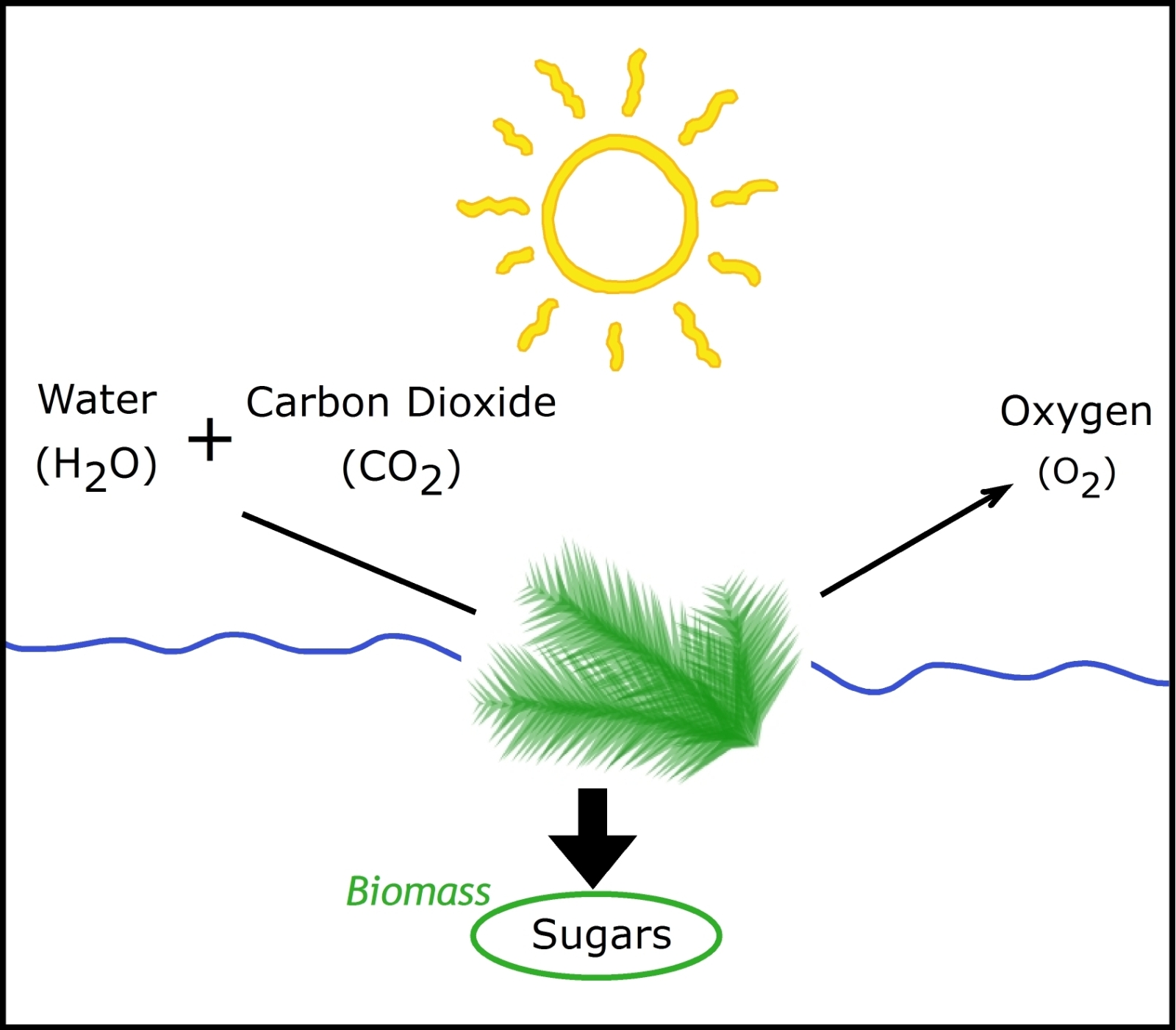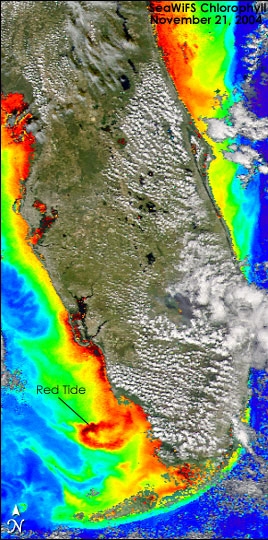Supplement 3.5: Algae and Photosynthesis
Algae, like plants, produce organic compounds from inorganic compounds (i.e. carbon dioxide and water) by capturing and using the energy from sunlight. They are thus also referred to as primary producers.
Photosynthesis takes place in organelles called chloroplasts in eukaryotic cells. Chloroplasts contain an outer and an inner membrane and pancake shaped structures called thylakoids. Energy is captured from sunlight by pigments (chlorophylls a and b and carotenoids) stored in the thylakoids.
Photosynthesis occurs in two stages commonly referred to as the light reactions (light is required) and the dark reactions (no light is directly required).
During the light reactions, energy captured from sunlight is absorbed by proteins that contain chlorophyll. In algae these proteins are embedded in the plasma membrane. Some of the light energy gathered by chlorophylls is stored in the form of adenosine triphosphate (ATP); the rest of the energy is used in the reactions that turn carbon dioxide into organic compounds (biomass). Oxygen is produced as a by-product of the light reactions. Thus during the light reactions, light energy is converted into the chemical energy needed for the dark reactions.
During the dark reactions (or Calvin cycle), six molecules of carbon dioxide are used to make sugar (glucose). Because algae use carbon dioxide and release oxygen as a product of the light reactions, they play an important role in maintaining the proper concentrations of carbon dioxide and oxygen in the environment, via the carbon cycle and oxygen cycle.
Algae use different pigments to harvest light, i.e. those that absorb primarily blue and red light (chlorophylls), those that primarily absorb blue and green light (carotenoids) and those that primarily blue or red light (phycobiliproteins). The amount of light absorbed depends upon the pigment composition and concentration found in the alga. Some algae absorb more light at a given wavelength than others, and are therefore, potentially capable of converting more light energy of that wavelength to chemical energy via photosynthesis.
All algae use chlorophyll a to collect photosynthetically active light, some algae species use chlorophyll b and / or other chlorophylls to collect additional light from wavelengths of the spectrum not absorbed by chlorophyll a or b.

